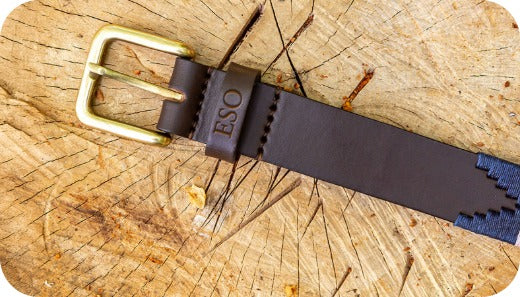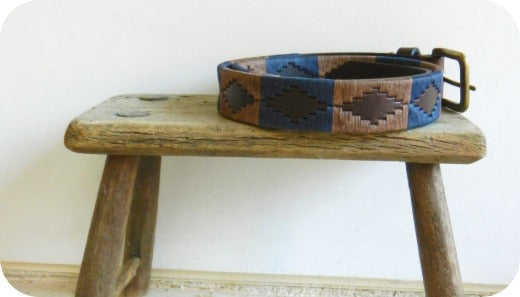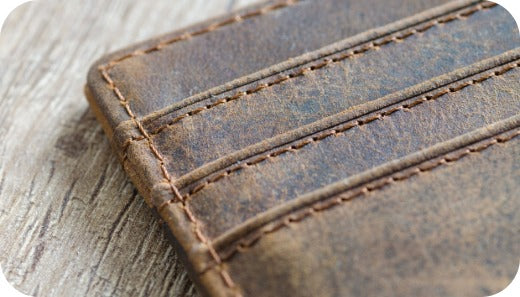Leder ist eines der ältesten Materialien der Menschheit und seit Jahrtausenden bekannt. Dennoch ist es auch heute noch ein Symbol für Stil, Luxus und Rebellion in der Mode. Seine Entwicklung vom primitiven Gebrauchsgegenstand zum unverzichtbaren High-Fashion-Produkt ist eine faszinierende Geschichte, die Kultur, Handwerkskunst und Kreativität vereint.
Antike Anfänge: Vom Schutz zum Status
Die Geschichte des Leders beginnt in den Anfängen der menschlichen Zivilisation. Frühe Menschen nutzten Tierhäute nicht nur zum Wärmen, sondern auch zum Schutz vor unwegsamem Gelände und Raubtieren. Archäologen haben über 5.000 Jahre alte Lederartefakte entdeckt, darunter Ledersandalen aus dem alten Ägypten und Mesopotamien.
Mit dem Fortschritt der Zivilisationen entwickelte sich Leder über seine praktische Seite hinaus. Im alten Ägypten, Rom und Griechenland wurde Leder für Rüstungen, Sandalen und Accessoires verwendet, oft verziert, um Status und Macht zu demonstrieren. Römische Soldaten beispielsweise trugen Ledersandalen und -gürtel als Teil ihrer Uniform und verbanden so Funktion mit Symbolik.
Wissenswertes: Das Wort „Leder“ stammt vom altenglischen „leðer“ , das wiederum protogermanische Wurzeln hat, was die lange Geschichte der Bedeutung dieses Materials unterstreicht.
Mittelalter und Renaissance: Lederhandwerk als Kunst
Im Mittelalter gründeten Lederhandwerker Zünfte, um die Qualität und Produktion von Lederwaren zu kontrollieren. Das Gerben von Leder war ein anspruchsvolles und geheimes Handwerk. Diese Zünfte hüteten ihre Gerbrezepte streng und gaben sie oft über Generationen hinweg in Familien weiter.
Leder wurde häufig für Kleidung wie Handschuhe, Gürtel und Schuhe sowie für Rüstungen von Rittern verwendet. Ledergürtel im Mittelalter waren oft mit Metallarbeiten, Stickereien und Edelsteinen verziert. Die Gürtel des Adels waren reich verziert, während das einfache Volk schlichtere Ausführungen trug.
In der Renaissance wurde die Lederverarbeitung dekorativer. Adlige trugen Handschuhe, die in leuchtenden Farben gefärbt und mit Familienwappen geprägt waren.
Die pflanzliche Gerbung von Leder , bei der natürliche Tannine aus Baumteilen verwendet werden, um Tierhäute in Leder zu verwandeln, wurde erstmals im Römischen Reich zu einem regulierten Industriezweig.
Wissenswertes: Katharina von Medici, eine italienische Adlige, die 1533 Königin von Frankreich wurde, brachte einen florentinischen Parfümeur mit. Er fertigte für sie parfümierte Lederhandschuhe aus einer Mischung von Moschus, Zibet und Blütenessenzen an, um den Geruch von gegerbtem Leder zu überdecken. Diese Handschuhe machten am französischen Hof sofort Eindruck und führten zur Popularität der Gants Parfumés (parfümierten Handschuhe), die zu einem unverzichtbaren Modeaccessoire des europäischen Adels wurden.
Die industrielle Revolution: Leder für die Massen
Die Industrielle Revolution im 18. und 19. Jahrhundert brachte Massenproduktionstechniken und neue Gerbmethoden wie die Chromgerbung mit sich, wodurch Leder leichter verfügbar wurde. Diese Zeit demokratisierte die Ledermode und weitete sie vom Adel auf die aufstrebende Mittelschicht aus.
Lederstiefel wurden aufgrund ihrer Strapazierfähigkeit und Schutzeigenschaften zum Standard für Arbeiter und Bergleute. Auch in der aufkommenden Transportkultur spielte Leder eine zentrale Rolle. Frühe Flieger trugen dicke Lederjacken und Helme zum Schutz vor Wind und Kälte.
Wissenswertes:
Ab den 1790er Jahren trugen einfache Soldaten, die in heißen Klimazonen stationiert waren, leichte Leinenhosen anstelle von Wollhosen. Anfang des 19. Jahrhunderts bat Arthur Wellesley, der Herzog von Wellington, seinen Schuhmacher, den klobigen Hessian Boot so umzugestalten, dass er zu diesen Leinenhosen passte. Das Ergebnis wurde 1813 zum Modetrend und wurde als „Wellington Boot“ bekannt.
20. Jahrhundert: Der Aufstieg der ikonischen Ledermode
Im 20. Jahrhundert erlebte Leder, beeinflusst durch Kino, Musik und Gegenkulturbewegungen, einen explosionsartigen Aufschwung als modisches Statement.
1920er-1930er Jahre: Handtaschen und Accessoires aus Leder wurden zu Symbolen der Eleganz.

Bild mit freundlicher Genehmigung: SFO Museum
In den 1950er Jahren markierte die Chanel 2.55 Flap aus Leder einen Wendepunkt in der Modefreiheit – sie war die erste Handtasche für Frauen mit Schulterriemen, die es ihnen ermöglichte, die Beschränkungen der traditionellen Clutch zu überwinden.

Die Chanel 2.55 Flap Bag (Bildrechte: Chanel)
1950er Jahre: Schott NYC stellte 1928 die erste Motorradjacke aus Leder mit Reißverschluss vor – die Perfecto. Ihre Berühmtheit stieg rasant, als Marlon Brando sie als Johnny auf einer Triumph in „Der Wilde“ (1953) trug. Die eigentliche Jacke (Modell 618) hatte keine Sterne auf den Schulterklappen; diese wurden im Film hinzugefügt. Diese Assoziation führte zu Verboten an einigen US-Schulen und britischen Bezirken und festigte ihr Image als Symbol der Rebellion und Jugendkultur.

Marlon Brando trägt die Perfecto®-Jacke in „The Wild One“ (Bildrechte: Schott NYC)
1970er: Die Punk-Bewegung begeisterte sich für Lederjacken, oft mit Nieten, Spikes und Patches. Mitte der 1970er Jahre entwickelte sich Punk-Mode zu einem rebellischen und selbstbewussten Stil, der Streetwear mit Anti-Mode-Attitüde verband, insbesondere in der New Yorker Bowery-Szene und in Clubs wie dem CBGB.
Die Ramones, eine bahnbrechende Punkband, prägten diesen Look maßgeblich. Bekannt für ihre aufeinander abgestimmten Lederjacken, Jeans und Sneakers, nutzten sie die Mode, um trotz persönlicher Differenzen eine einheitliche, fast brüderliche Identität zu präsentieren. Ihr ikonischer Stil – schlicht und doch kraftvoll – wurde zum Symbol des rauen, reduzierten Ethos der Punkbewegung, ähnlich wie die Beatles den Look einer früheren Ära prägten.

Mitglieder der Band Ramones in den beliebten Lederjacken (Bild mit freundlicher Genehmigung von British GQ)
Designer Bobby Breslau machte Mitte der 1970er-Jahre übergroße, lässige „Halston Bags“ oder Hobo Bags populär; die New York Times nannte sie „die Handtasche der 1970er-Jahre“. Sie waren oft aus weichem Leder gefertigt und so geschnitten, dass sie über die Schulter fielen, was die Ästhetik der Bohème-Mode widerspiegelte.

Model trägt die Halston-Tasche für die Vogue, Februar 1976 (Bild mit freundlicher Genehmigung von Sighs & Whispers)
1980er-1990er: Designer wie Gianni Versace und Karl Lagerfeld integrierten Leder in die Haute Couture – Lederröcke, -hosen und -blazer wurden zu Laufsteg-Grundnahrungsmitteln.

Cindy Crawford in einem Lederrock (Bild mit freundlicher Genehmigung von Fashionista)
In den späten 1980er Jahren wurden Volllederanzüge – aufeinander abgestimmte Jacken und Hosen – zum Symbol des Power Dressings. Vogue präsentierte Ensembles von Yves Saint Laurent und Carolina Herrera, die luxuriöses Leder mit strukturierter Schneiderkunst verbanden.
In den 90er Jahren kam Patchwork-Leder auf den Markt – eine Mischung aus Texturen, Farben und Schattierungen. Dieser Trend, der bei Neo-Soul-Künstlern wie Erykah Badu und Lauryn Hill beliebt war, inspirierte die DIY-Mode und erlebt nun in modernen Kollektionen ein Revival.
Lederblazer waren in den 1990er-Jahren ein Klassiker. Winona Ryder und Gwyneth Paltrow trugen häufig elegante, übergroße Blazer. Sie markieren den Wandel von der Biker-Ästhetik hin zum minimalistischen Chic, der durch den Einfluss von „Matrix “ noch verstärkt wurde.

Lederblazer wie in „Matrix“ (Bild mit freundlicher Genehmigung: Everett Collection via Vogue)
Ethische Prüfung und Innovation in der Lederindustrie
Mit der Weiterentwicklung der Modebranche geriet Leder, das lange Zeit für seine Langlebigkeit und sein Prestige geschätzt wurde, aufgrund seiner Umweltauswirkungen und ethischen Bedenken zunehmend ins Visier. Seit dem späten 20. Jahrhundert und zunehmend auch im 21. Jahrhundert führte das wachsende Bewusstsein für Tierschutz und die Umweltverschmutzung durch industrielle Gerbung dazu, dass Verbraucher und Designer gleichermaßen die Herkunft und Verarbeitung von Lederwaren hinterfragten.
Besonders die Massentierhaltung und der Einsatz aggressiver Chemikalien wie Chrom in der konventionellen Gerbung rückten in den Fokus der Öffentlichkeit. Dies führte sowohl zu Kritik von Tierschützern als auch zu Innovationen innerhalb der Branche.
Luxus- und Mainstreammarken reagierten darauf mit der Einführung von ethisch gewonnenem Leder – das aus Nebenprodukten der Fleischindustrie, zertifizierten Tierhaltungsbetrieben oder Öko-Gerbverfahren gewonnen wurde. Die pflanzliche Gerbung, ein historisches Verfahren mit natürlichen Tanninen aus Rinde und Blättern, erfreute sich als nachhaltigere Alternative wieder zunehmender Beliebtheit.
2018 sah sich Gucci wegen der fortgesetzten Verwendung exotischer Häute wie Python, Alligator und Strauß für seine Luxushandtaschen und -schuhe erheblicher Kritik und Protesten von Tierschutzorganisationen wie PETA ausgesetzt. Die Kontroverse löste öffentliche Debatten über die ethische Frage der Verwendung bedrohter Arten für die Mode aus. Unter dem Druck kündigte Gucci 2019 an , die Verwendung exotischer Häute bis 2019 schrittweise einzustellen, was einen grundlegenden Wandel in der Beschaffung von Luxusleder signalisierte.

Bild mit freundlicher Genehmigung: Vogue Business
Dieser ethische Wandel beeinflusste nicht nur die Verbrauchergewohnheiten, sondern veränderte auch die Marketing- und Designphilosophien globaler Modehäuser und verband Tradition mit bewusster Innovation.
Hinweis: Alle Pampeano-Produkte werden aus ethisch einwandfreiem und pflanzlich gegerbtem Leder hergestellt.
Moderne: Nachhaltigkeit und Innovation
Heute stehen Leder neue Innovationsmöglichkeiten offen:
- Nachhaltiges Leder: Marken wie Pampeano setzen auf umweltfreundliche Gerbverfahren, um die Umweltverschmutzung durch Chrom und andere traditionell verwendete Chemikalien zu reduzieren.

Die Varon-Reisetasche von pampeano besteht aus pflanzlich gegerbtem braunem Leder
-
Veganes und im Labor gezüchtetes Leder: Angesichts zunehmender ethischer Bedenken bieten Alternativen wie Pilzleder (Mylo), Ananasleder (Piñatex) und im Labor gezüchtete Materialien tierversuchsfreie Optionen, die das Aussehen und die Haptik von Leder imitieren.
- Luxuriöse Handwerkskunst: Trotz Herausforderungen bleiben traditionelle Lederhandwerker unverzichtbar und fertigen hochwertige Taschen und Schuhe, die zeitlose Investitionen sind. Marken wie Hermès und Bottega Veneta sind für ihre sorgfältige Lederverarbeitung bekannt. Auch Pampeano, eine Marke für Premium-Lederaccessoires, zelebriert jahrhundertealte Handwerkskunst mit ihren unverwechselbaren handgenähten Mustern. Diese Designs sind mehr als nur dekorativ – sie sind eine Hommage an die argentinische Reitkultur und tragen dazu bei, eine stolze Handwerkstradition zu bewahren.

Ein Gürtel aus Pampeano-Leder mit handgenähten Details; die Fertigstellung jedes Gürtels dauert bis zu 5 Stunden
Fazit: Das bleibende Erbe von Leder in Modeaccessoires
Von Gürteln über Geldbörsen und Taschen bis hin zur sorgfältigen Handarbeit, die Leder zum Leben erweckt – die Geschichte von Leder in der Mode ist ein Beweis für menschlichen Einfallsreichtum und ästhetische Wertschätzung. Die natürliche Patina, die sich im Laufe der Zeit entwickelt, würdigt die einzigartige Beziehung zwischen Träger und Accessoire und macht Leder nicht nur zu einem Material, sondern zu einer lebendigen Kunstform.
Ob in Vintage-Stücken, die über Generationen weitergegeben wurden, oder in topaktuellen Designs aus modernen Ateliers, Leder bleibt ein Symbol für Langlebigkeit, Luxus und zeitlosen Stil.





